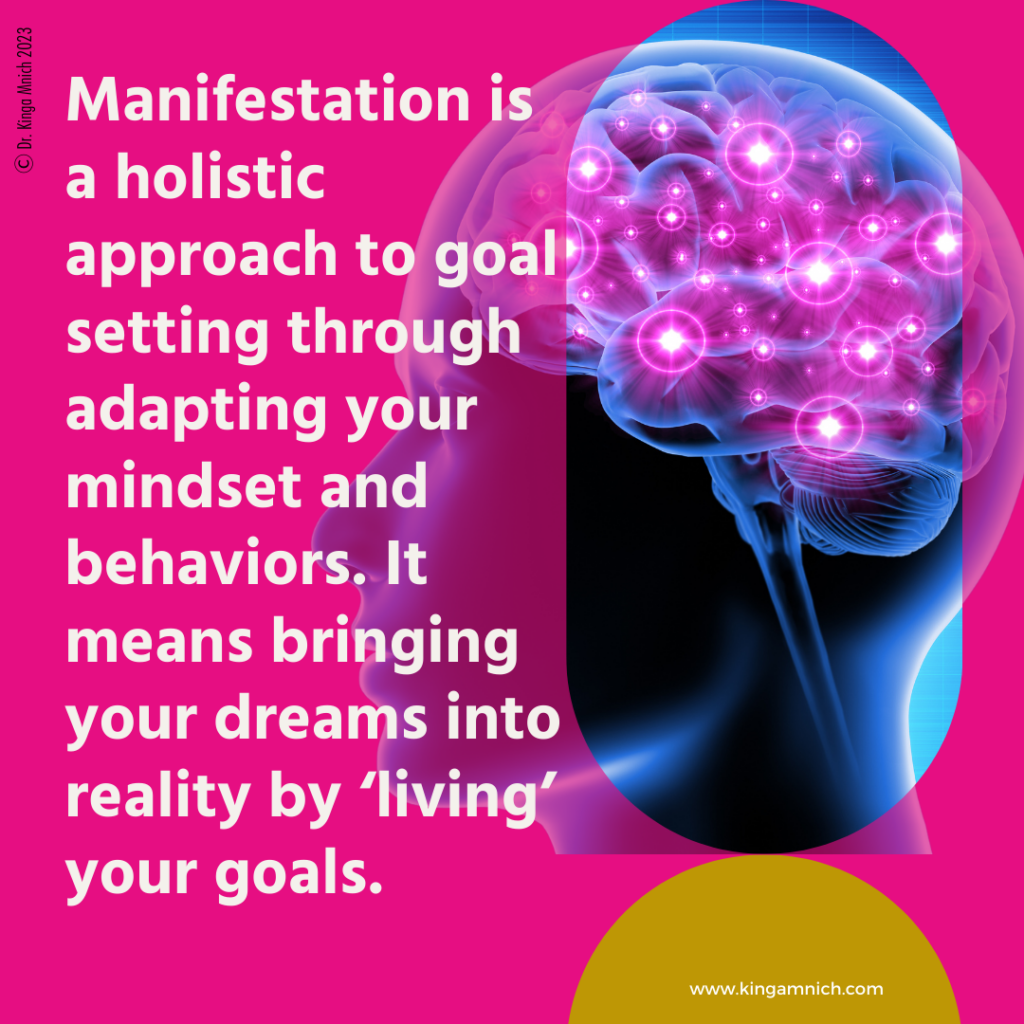So you’ve found yourself facing challenges and obstacles that are holding you back from achieving your goals and living your best life. It can be frustrating, overwhelming, and downright discouraging. But fear not, my friend, for there is a powerful tool at your disposal: visualization techniques. By harnessing the power of visualization, you can transform your mindset and overcome any adversity that comes your way. In this article, we will explore various visualization techniques that will help you navigate the roadblocks on your path to success and unlock your true potential. So sit back, relax, and get ready to embark on a journey of self-discovery and personal growth.

This image is property of pixabay.com.
Understanding the Power of Visualization
Visualization is a powerful technique that can help you shape your reality and overcome challenges and obstacles in your life. By harnessing the power of your imagination, you can create mental images and scenarios that align with your goals and desires. This process allows you to tap into the subconscious mind and reprogram your thoughts and beliefs, ultimately leading to positive change in your life.
The Definition of Visualization
Visualization is the process of using your imagination to create vivid mental images and scenarios. It involves engaging the senses and emotions to create a multisensory experience in the mind. By visualizing specific outcomes and experiences, you can train your mind to focus on the positive and manifest your desires into reality.
The Science Behind Visualization
The science behind visualization lies in the way our brains interpret and respond to mental imagery. When we visualize an experience or outcome, the same regions of our brain are activated as if we were actually experiencing it. This process helps to strengthen neural connections and build new pathways in the brain that support the manifestation of our desires.
Research has shown that visualization can have a powerful impact on performance, motivation, and overall well-being. Athletes use visualization techniques to improve their performance and mental focus. Business professionals visualize success to enhance their confidence and productivity. By understanding the science behind visualization, you can harness its power to overcome challenges and achieve your goals.
How Visualization Can Help Overcome Challenges and Obstacles
Visualization can be a valuable tool in overcoming challenges and obstacles. When faced with difficult situations, it’s easy to become overwhelmed or discouraged. However, by visualizing yourself successfully navigating through these challenges, you can reframe your mindset and approach them with a positive outlook.
Visualization can help you:
- Build confidence: Visualizing yourself overcoming obstacles and achieving your goals can boost your self-confidence and belief in your abilities. This increased confidence will help you approach challenges with a growth mindset and the determination to succeed.
- Focus on solutions: When faced with a challenge, it’s common to get stuck in a negative thought loop, focusing on the problem rather than finding a solution. Visualization allows you to shift your focus towards finding creative solutions and alternative pathways to success.
- Decrease stress and anxiety: Visualizing positive outcomes can help reduce stress and anxiety associated with challenging situations. By imagining yourself successfully handling these situations, you can train your mind to respond with calmness and clarity.
- Increase motivation and determination: Visualization can ignite a fire within you, fueling your motivation and determination to overcome obstacles. By envisioning the end result and the satisfaction that comes with it, you can stay focused and committed to your goals.
Setting Clear Goals and Intentions
Before you can effectively visualize success and overcome challenges, it’s important to set clear goals and intentions. This involves identifying the specific challenges and obstacles you want to tackle and defining the desired outcome.
Identifying the Challenges and Obstacles
Take some time to reflect on the challenges and obstacles you currently face in your life. These could be personal, professional, or related to any other aspect of your life. Identify the areas where you feel stuck or where you consistently encounter roadblocks.
By taking the time to identify these challenges, you can gain a better understanding of the areas that require your attention and visualization.
Defining the Desired Outcome
Once you’ve identified the challenges, it’s important to define the desired outcome. What would success look like for you in each of these areas? Get specific and be clear about what you want to achieve.
When defining the desired outcome, consider the emotions and sensations you would experience once you’ve overcome the challenges. Visualize how your life would be transformed and how you would feel in this new reality.
Creating a Vision Board
One effective way to enhance visualization is by creating a vision board. A vision board is a visual representation of your goals and desires. It’s a collage of images, words, and affirmations that inspire and motivate you.
To create a vision board, start by gathering magazines, newspapers, or images from the internet that resonate with your goals and desires. Cut out or print these images and arrange them on a poster board or corkboard. Add affirmations and words that reinforce your intentions.
Display your vision board in a place where you’ll see it daily. Take a few moments each day to look at your vision board and visualize yourself experiencing the outcomes you desire. This practice will help keep your goals at the forefront of your mind and reinforce your commitment to your visualization practice.
Creating Mental Images and Scenarios
Now that you have clear goals and intentions, it’s time to dive into the process of creating mental images and scenarios through visualization. This involves using imagery to visualize success, creating vivid and detailed mental images, and running mental scenarios.
Using Imagery to Visualize Success
When visualizing success, it’s important to use vivid and detailed imagery. Instead of simply imagining a desired outcome, visualize yourself actively engaged in the process of achieving that outcome. Imagine the sights, sounds, and emotions associated with your success.
For example, if your goal is to run a marathon, imagine yourself crossing the finish line, feeling the rush of adrenaline and the cheers of the crowd. Visualize the details of the racecourse, the sound of your footsteps, and the feeling of accomplishment as you achieve this milestone.
Creating Vivid and Detailed Mental Images
To create vivid and detailed mental images, engage all of your senses. Imagine what it would look like, sound like, feel like, smell like, and even taste like to achieve your desired outcome. The more senses you can engage, the more real and powerful your visualization will become.
For instance, if your goal is to start a successful business, visualize yourself in your dream office space. See the colors, the furniture, and the décor. Hear the sounds of a bustling workplace and the ringing of success. Feel the excitement and pride as you interact with clients and see your business grow.
Running Mental Scenarios
In addition to creating mental images, running mental scenarios can be an effective way to prepare for challenges and obstacles. By visualizing yourself successfully navigating difficult situations, you can build resilience and develop strategies for overcoming obstacles.
For example, if you have a presentation coming up at work and are feeling anxious about it, take a few moments to visualize yourself confidently delivering the presentation. Imagine the positive reactions from your audience and the feeling of success as you effectively convey your message.
Engaging the Senses
Visualization becomes even more powerful when you engage all five senses. By incorporating sight, hearing, touch, taste, and smell into your visualizations, you can create a rich and immersive experience in your mind.
Incorporating All Five Senses
When visualizing, consider how each of the senses can be incorporated into your mental images. For example, if your goal is to improve your physical fitness, imagine the smell of the fresh grass as you go for a run in the park, the feeling of the cool breeze on your skin, and the taste of the water you drink to stay hydrated.
By engaging all of your senses, your visualizations become more real and tangible, reinforcing the connection between your imagination and reality.
Feeling the Emotions and Sensations
While engaging the senses is important, it’s equally important to feel the emotions and sensations associated with your desired outcomes. Emotions are powerful drivers of action and can help fuel your motivation.
For instance, if your goal is to travel the world, imagine the excitement and anticipation you would feel as you board a plane to a new destination. Feel the sense of adventure and the joy of exploring new cultures. Allow yourself to fully experience the emotions and sensations associated with your visualization.
Enhancing Visualization with Sensory Triggers
To enhance the effectiveness of your visualization practice, you can use sensory triggers to anchor your visualizations in reality. Choose a specific object or action that will act as a reminder of your visualization.
For example, if your goal is to improve your public speaking skills, you can choose a specific piece of jewelry to wear every time you practice your visualization. Each time you put on the jewelry, it will serve as a trigger to bring your mind back to your visualization and reinforce your commitment to your goal.
By incorporating sensory triggers, you can carry the benefits of visualization with you throughout your day and reinforce the subconscious connections between your visualizations and your actions.
Practicing Daily Visualization
Consistency is key when it comes to visualization. To truly harness the power of this technique, it’s important to make it a daily practice. Set aside dedicated time and create a routine that works for you.
Finding a Quiet and Comfortable Space
Find a quiet and comfortable space where you can relax and focus on your visualization practice. This could be a designated area in your home, a peaceful outdoor location, or even a quiet corner in your office.
Ensure that you have minimal distractions and create an environment that promotes a sense of calm and relaxation. This will allow you to fully immerse yourself in your visualizations and maximize their effectiveness.
Setting Aside Dedicated Time
Schedule dedicated time for your visualization practice each day. This could be in the morning or evening, or whenever works best for you. Consistency is key, so aim to make it a non-negotiable part of your daily routine.
Start with a few minutes each day and gradually increase the duration as your practice becomes more ingrained. The more consistently you engage in visualization, the greater the impact on your mindset and actions.
Using Guided Visualization Exercises
If you’re new to visualization or find it challenging to stay focused, guided visualization exercises can be helpful. There are numerous resources available, such as guided meditation apps, audio recordings, or online courses.
Guided visualization exercises provide structure and guidance, leading you through the process of visualization. They can help you relax, quiet your mind, and tap into the power of your imagination. Experiment with different guided visualization exercises until you find ones that resonate with you.
Combining Visualization with Affirmations
To amplify the effects of visualization, consider combining it with affirmations. Affirmations are positive statements that reinforce your beliefs, values, and goals. When used in conjunction with visualization, affirmations can further strengthen your mindset and build self-confidence.
Choosing Empowering and Positive Affirmations
When choosing affirmations, focus on statements that are empowering, positive, and aligned with your goals. For example, if your goal is to improve your financial situation, affirmations such as “I am abundant and financially secure” or “I attract wealth and abundance into my life” can reinforce your desired outcomes.
Choose affirmations that resonate with you personally and feel authentic. Repeat them daily, both during your visualization practice and throughout your day, to strengthen the neural pathways associated with your goals.
Repeating Affirmations During Visualization
As you engage in your visualization practice, incorporate your chosen affirmations into your mental images and scenarios. For example, if you’re visualizing yourself achieving career success, repeat affirmations such as “I am capable and deserving of career success” or “I confidently seize opportunities and achieve my goals.”
By repeating affirmations during visualization, you further reinforce the positive beliefs and mindset necessary for achieving your desired outcomes. The combination of visual imagery and positive affirmations creates a powerful synergy that strengthens your resolve and propels you towards success.
Enhancing the Effectiveness of Affirmations
To enhance the effectiveness of affirmations, consider writing them down and displaying them in visible places. Create affirmation cards or sticky notes and place them on your bathroom mirror, computer screen, or any other area where you’ll see them frequently.
By surrounding yourself with these visual reminders, you reinforce your affirmations and keep your goals at the forefront of your mind. The constant exposure to positive, empowering statements fuels your motivation and helps you stay focused on your visualization practice.
Using Progressive Visualization Techniques
Just like any skill, visualization can be developed and strengthened over time with practice. Start with simple visualizations and gradually progress to more complex and challenging ones.
Starting with Simple Visualizations
If you’re new to visualization, start with simple visualizations that are easily accessible and relatable. For example, you can visualize yourself successfully completing a daily task or engaging in a specific activity that brings you joy.
By starting with simple visualizations, you build a foundation of success and familiarity. This boosts your confidence and sets the stage for more ambitious visualizations in the future.
Progressing to More Complex and Challenging Visualizations
Once you’ve mastered simple visualizations, you can progress to more complex and challenging ones. Visualize yourself overcoming bigger obstacles or achieving more significant goals. Push yourself to expand your comfort zone and embrace new possibilities.
For example, if your ultimate goal is to start your own business, visualize yourself successfully navigating the challenges of entrepreneurship, attracting clients, and experiencing financial abundance.
By gradually increasing the complexity of your visualizations, you build resilience, expand your belief in what is possible, and strengthen your ability to overcome obstacles.
Gradually Building Confidence and Resilience
Visualization is a powerful tool for building confidence and resilience. By consistently engaging in visualization practice and progressively challenging yourself, you develop a sense of belief in your abilities and a deep understanding of your potential.
As you visualize yourself succeeding in various scenarios, you strengthen your mindset and build resilience to setbacks and obstacles. Each visualization becomes a stepping stone towards your goals, reinforcing your confidence and trust in the process.
Overcoming Doubt and Resistance
Doubt and resistance are common barriers that can hinder your visualization practice. It’s important to address these inner doubts and overcome external criticism or skepticism.
Identifying and Addressing Inner Doubts
Inner doubts can manifest as negative self-talk or limiting beliefs that undermine your confidence and belief in the power of visualization. It’s essential to identify these doubts and challenge them with positive, empowering thoughts.
When doubts arise, remind yourself of your past successes and the progress you’ve made. Reframe limiting beliefs with positive affirmations and counter any negative self-talk with self-compassion and kindness. Celebrate your small wins and use them as evidence of your ability to achieve your goals through visualization.
Dealing with External Criticism and Skepticism
External criticism or skepticism can also impact your confidence and belief in visualization. It’s important to remember that everyone’s journey is unique, and not everyone may understand or support your practice.
Seek out supportive communities or like-minded individuals who can encourage and validate your experiences. Surrounding yourself with positive influences can help counter external criticism and reinforce your belief in the power of visualization.
Building Self-Confidence and Trust in the Process
Overcoming doubt and resistance requires building self-confidence and trust in the visualization process. The more you practice visualization and experience its benefits firsthand, the more confidence you’ll gain.
Acknowledge and celebrate your successes, no matter how small they may seem. Trust in the process and the power of your mind to create positive change in your life. As you build self-confidence and trust in your ability to manifest your desires, doubt and resistance will gradually dissipate.
Taking Inspired Action
While visualization is a powerful tool, it’s important to remember that it should be combined with inspired action. Visualization alone cannot create the results you desire; it must be accompanied by purposeful action.
Aligning Actions with Visualization
As you engage in your visualization practice, identify the actions that align with your goals and intentions. Visualize yourself taking these actions and meeting the challenges head-on. By aligning your actions with your visualizations, you create a powerful synergy that propels you towards success.
For example, if your goal is to improve your health and fitness, visualize yourself engaging in regular exercise and making healthy food choices. Then, take inspired action by implementing a consistent exercise routine and adopting a balanced diet.
Breaking Down Goals into Manageable Steps
To ensure that your visualizations are effective, break down your goals into manageable steps. This allows you to create a roadmap for success and track your progress along the way.
Identify the small steps or milestones that will lead you to your desired outcome. Each time you achieve one of these smaller goals, you can celebrate your progress and feel a sense of accomplishment. This positive reinforcement motivates you to continue working towards your larger goals.
Celebrating Small Wins
Celebrating small wins is an essential part of the visualization process. Acknowledge and appreciate each step forward, no matter how small it may seem. By celebrating your progress, you reinforce positive behaviors and cultivate a sense of gratitude.
Celebrate small wins by treating yourself to something special, sharing your achievements with loved ones, or simply taking a moment to acknowledge and appreciate your efforts. This positive reinforcement fuels your motivation and helps build momentum towards your ultimate goals.
Harnessing the Power of Gratitude
Gratitude is a powerful emotion that can enhance your visualization practice and help you overcome challenges and obstacles.
Expressing Gratitude for Current and Future Success
Take time each day to express gratitude for the present moment and for the success you’ve already achieved. Reflect on the abundance in your life and the progress you’ve made. By focusing on gratitude, you shift your mindset towards positivity and open yourself up to even greater success.
As you engage in your visualization practice, infuse it with a sense of gratitude. Visualize yourself experiencing the success and abundance you desire, and feel a deep sense of gratitude for its manifestation.
Using Gratitude to Shift Perspective and Overcome Challenges
When facing challenges or obstacles, gratitude can help shift your perspective and cultivate a positive mindset. Instead of focusing on the difficulties, find aspects of the situation to be grateful for. Look for the lessons or growth opportunities that emerge from these challenges.
By reframing your mindset with gratitude, you can approach challenges with resilience and a sense of possibility. This positive outlook fuels your visualization practice and empowers you to overcome any obstacle in your path.
Maintaining a Grateful Attitude throughout the Journey
Maintaining a grateful attitude throughout your journey is key to the ongoing success of your visualization practice. Cultivate a mindset of gratitude by regularly expressing appreciation for the people, experiences, and opportunities in your life.
Incorporate gratitude into your daily routine by keeping a gratitude journal, practicing acts of kindness, or simply taking a few moments each day to reflect on what you’re grateful for. This ongoing practice deepens your connection to the present moment and reinforces the positive energy necessary for manifesting your desires.
In conclusion, visualization is a powerful technique that can help you overcome challenges and obstacles in your life. By setting clear goals, creating vivid mental images, engaging the senses, and practicing daily visualization, you can tap into the power of your imagination and manifest your desires into reality. Combine visualization with affirmations, progressive techniques, and gratitude to amplify its effects and build resilience. With consistency and inspired action, visualization can help you become the best version of yourself and unlock your true potential.



